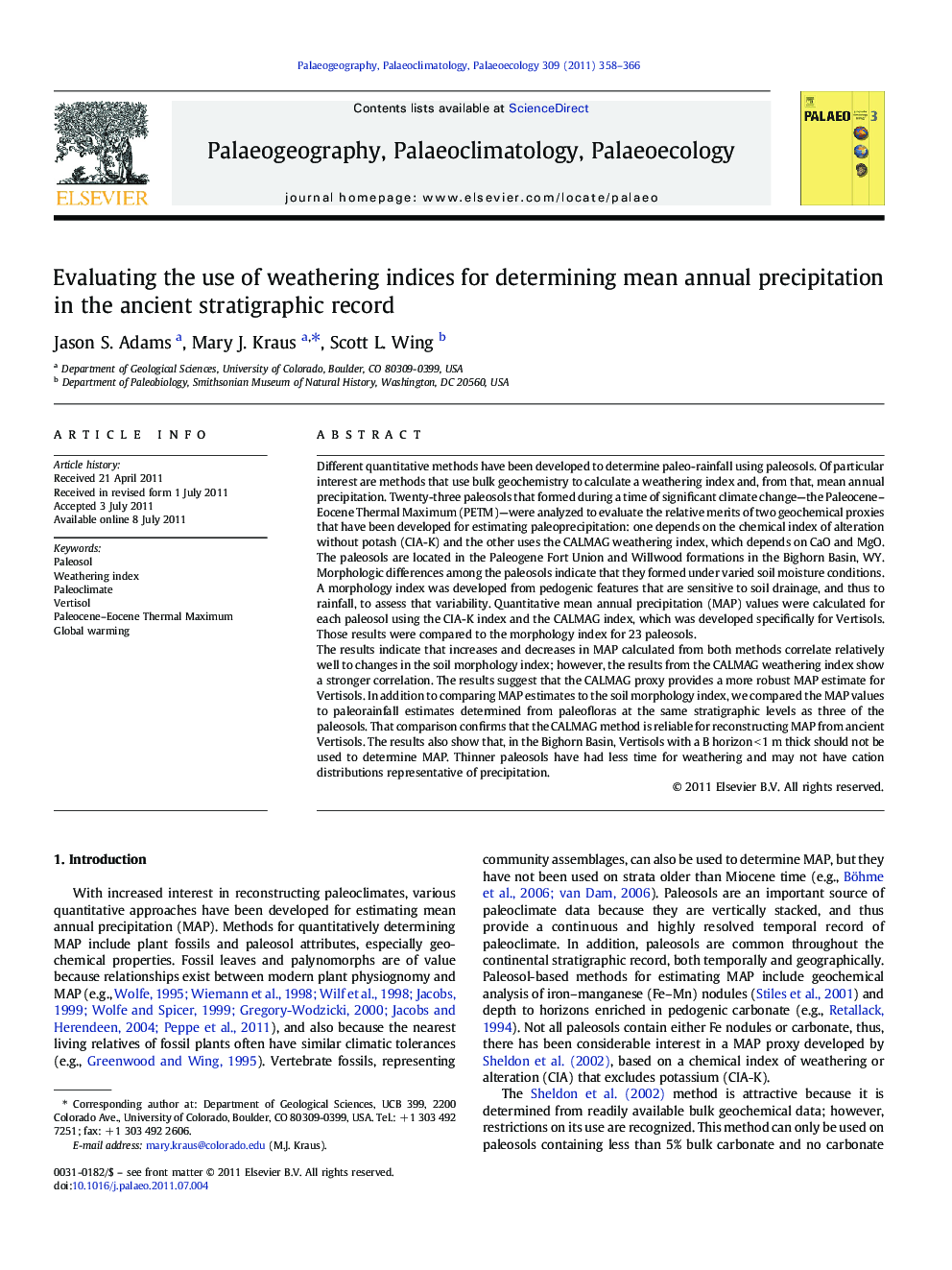| کد مقاله | کد نشریه | سال انتشار | مقاله انگلیسی | نسخه تمام متن |
|---|---|---|---|---|
| 4467262 | 1622249 | 2011 | 9 صفحه PDF | دانلود رایگان |

Different quantitative methods have been developed to determine paleo-rainfall using paleosols. Of particular interest are methods that use bulk geochemistry to calculate a weathering index and, from that, mean annual precipitation. Twenty-three paleosols that formed during a time of significant climate change—the Paleocene–Eocene Thermal Maximum (PETM)—were analyzed to evaluate the relative merits of two geochemical proxies that have been developed for estimating paleoprecipitation: one depends on the chemical index of alteration without potash (CIA-K) and the other uses the CALMAG weathering index, which depends on CaO and MgO. The paleosols are located in the Paleogene Fort Union and Willwood formations in the Bighorn Basin, WY. Morphologic differences among the paleosols indicate that they formed under varied soil moisture conditions. A morphology index was developed from pedogenic features that are sensitive to soil drainage, and thus to rainfall, to assess that variability. Quantitative mean annual precipitation (MAP) values were calculated for each paleosol using the CIA-K index and the CALMAG index, which was developed specifically for Vertisols. Those results were compared to the morphology index for 23 paleosols.The results indicate that increases and decreases in MAP calculated from both methods correlate relatively well to changes in the soil morphology index; however, the results from the CALMAG weathering index show a stronger correlation. The results suggest that the CALMAG proxy provides a more robust MAP estimate for Vertisols. In addition to comparing MAP estimates to the soil morphology index, we compared the MAP values to paleorainfall estimates determined from paleofloras at the same stratigraphic levels as three of the paleosols. That comparison confirms that the CALMAG method is reliable for reconstructing MAP from ancient Vertisols. The results also show that, in the Bighorn Basin, Vertisols with a B horizon < 1 m thick should not be used to determine MAP. Thinner paleosols have had less time for weathering and may not have cation distributions representative of precipitation.
► Testing of two quantitative methods for determining precipitation from paleosols.
► Paleosols span a time of climate change—the Paleocene–Eocene Thermal Maximum.
► Results show that the CALMAG approach is robust for paleo-Vertisols.
► Paleosol MAP values consistent with soil morphology and paleobotanical proxies.
Journal: Palaeogeography, Palaeoclimatology, Palaeoecology - Volume 309, Issues 3–4, 1 September 2011, Pages 358–366